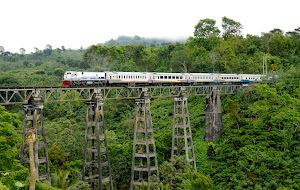 Jeju-do is a
volcanic island located 85km (53 miles) off the tip of the Korean peninsula.
The name “Jeju” refers to the island (Jeju-do), the province (which includes
nearby islands), and Jeju city (Jeju-si), which can make things a bit confusing
for the casual visitor. South Korea’s largest island, Jeju-do was formed by an
outpouring of lava about 2 million years ago, and 90% of its surface is covered
by basalt. In the center of the island is Hallasan (Mt. Halla), the highest
mountain in South Korea. The island and its lava tubes (cavelike formations
formed when erupting lava cools) were designated a natural World Heritage site
by UNESCO in June 2007. Indeed, Geomunoreum is regarded by some as the best
lava tube system in the world. And not only do they give the island a unique
natural beauty, but they provide insight into the history of our planet and its
geological processes.
Jeju-do is a
volcanic island located 85km (53 miles) off the tip of the Korean peninsula.
The name “Jeju” refers to the island (Jeju-do), the province (which includes
nearby islands), and Jeju city (Jeju-si), which can make things a bit confusing
for the casual visitor. South Korea’s largest island, Jeju-do was formed by an
outpouring of lava about 2 million years ago, and 90% of its surface is covered
by basalt. In the center of the island is Hallasan (Mt. Halla), the highest
mountain in South Korea. The island and its lava tubes (cavelike formations
formed when erupting lava cools) were designated a natural World Heritage site
by UNESCO in June 2007. Indeed, Geomunoreum is regarded by some as the best
lava tube system in the world. And not only do they give the island a unique
natural beauty, but they provide insight into the history of our planet and its
geological processes.
Jeju-do has
been called many names in its long history, including the “Hawaii of Korea,” a
name that I must admit is not completely deserved. Still, its tropical beauty
attracts thousands of Korean newlyweds to honeymoon on the island, and in
summer months you’ll find droves of them, usually tailed by hired photographers,
filling hotel rooms and making the beaches something less than a peaceful getaway.
Jeju-do is a
different kind of volcanic island. The island’s beauties attract the largest group of
tourists—Japanese businessmen who are looking to get away from their salary-man
lives and enjoy some eye candy while they’re at it. And yet, the Jeju-do’s women
are famous for more than their beauty. The most interesting women on the island
are the haenyeo, the women divers who dive for seafood and seaweed.
Although
they’re a dying breed, their incredible skills (being able to dive to great depths
without any scuba gear) are legendary throughout the country. Although the
island is now a vacation spot, it has a long and bleak history. In 1273, invading
Mongols used the island as a training ground for their horses. It later became
the site of a prison for those ban-ished from the royal court, and subse-quently
a fort to protect the rest of the peninsula from Japanese pirates. What little
the natives could produce in horses, tangerines, and abalone were taken as tribute
taxes for the king.
The Korean
War brought more trouble to the island as hundreds of refugees flocked here, taxing
its already scarce natural resources. However, in the 1960s and 1970s, the island
began its transformation into a tourist destination. The main road was widened,
and transportation improved with increased arrival of boats and planes. This
relatively recent modernization and influx of people has brought the island more
into the mainstream. Yet signs of the island’s traditions remain, not only in
the stone walls surrounding humble houses, but in the open and trusting
personalities of the people who populate the island.
Today, Jeju-do
is regarded as a tropical island paradise and ideal vacation destination. With
its expansive beaches, rocky cliffs, and dramatic waterfalls, Jeju-do is a destination
not to be missed.
From: Cecilia
Han-Jin Lee, Frommer’s South Korea 2nd Edition
Read More......












